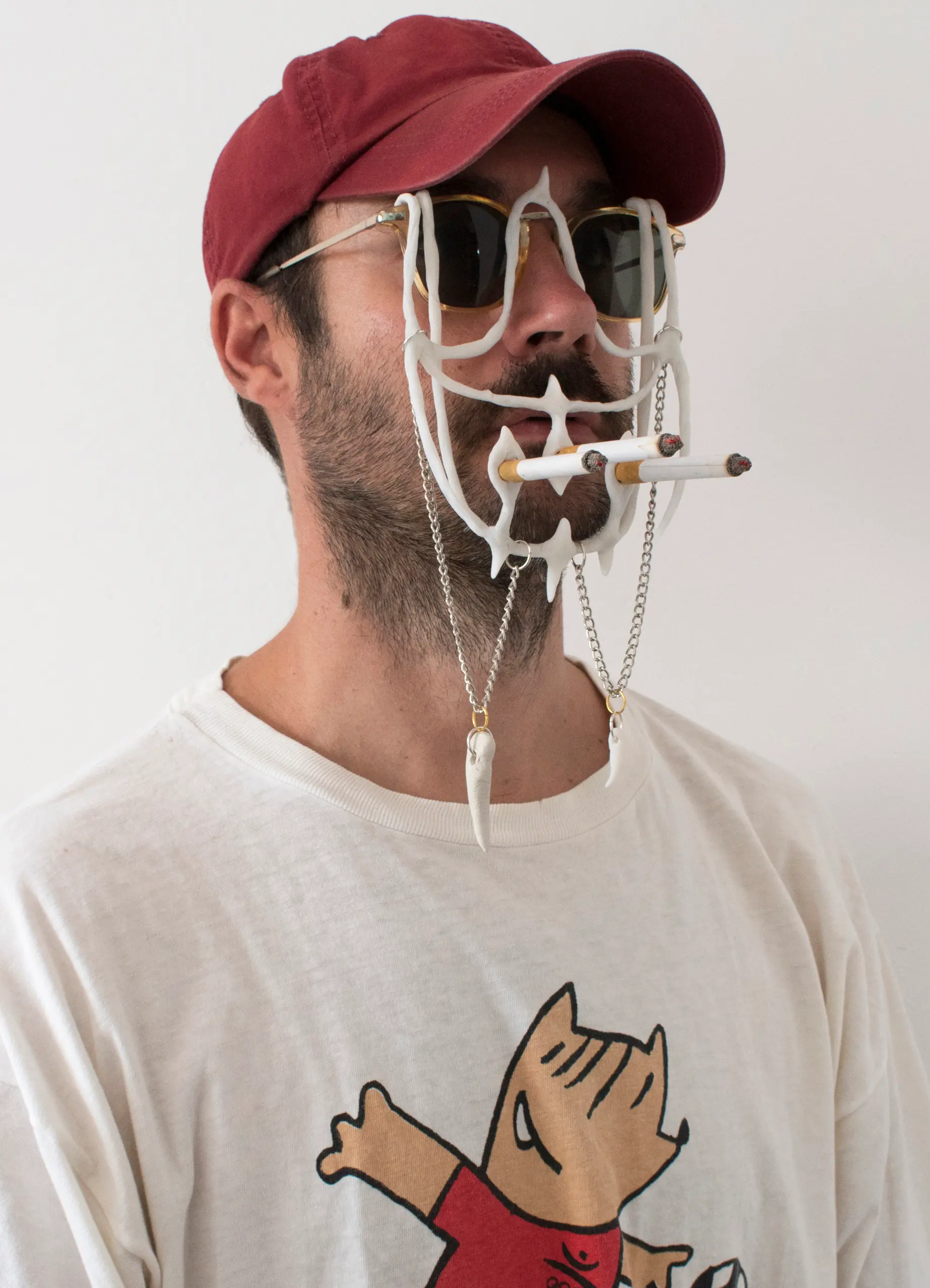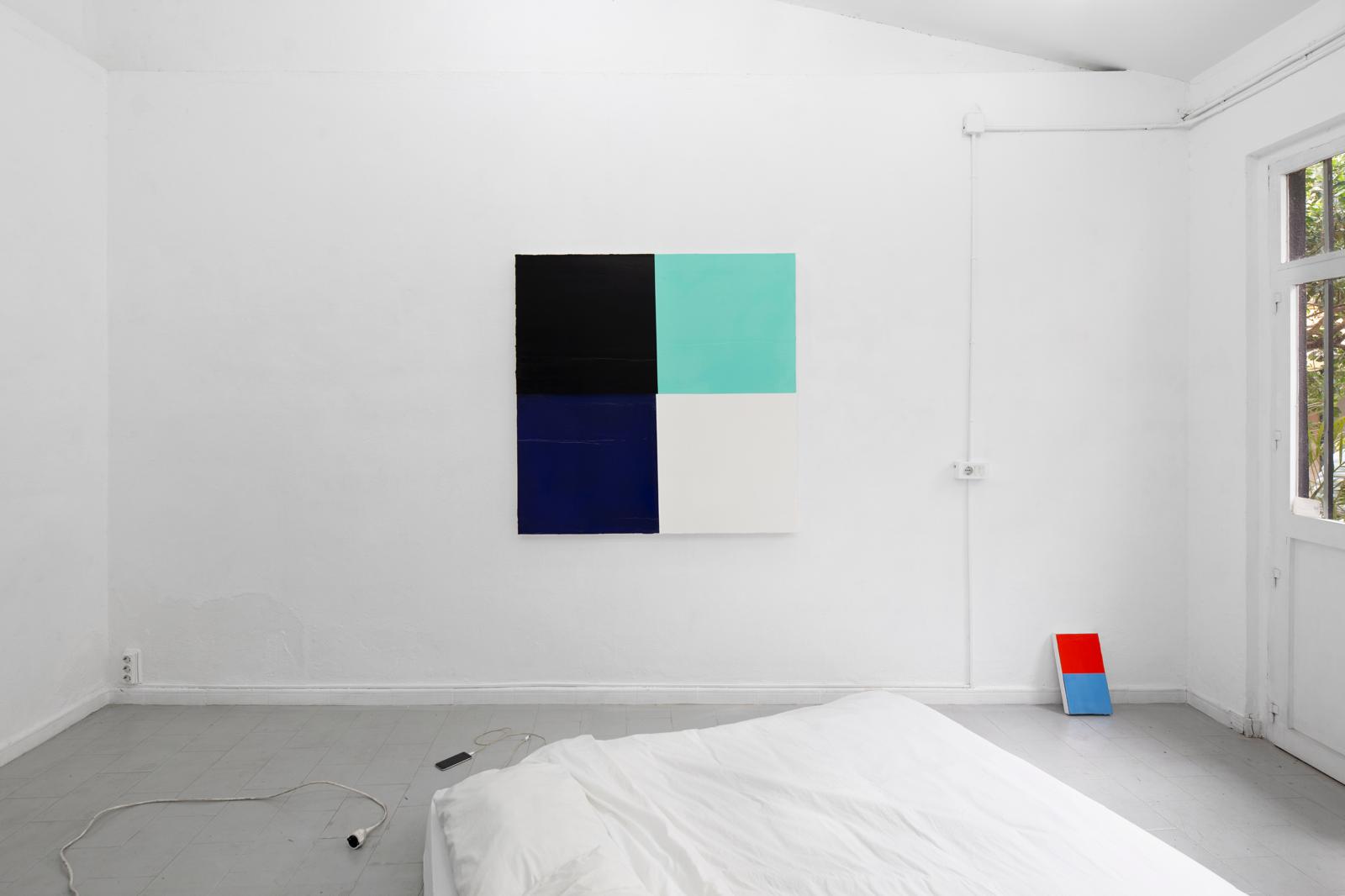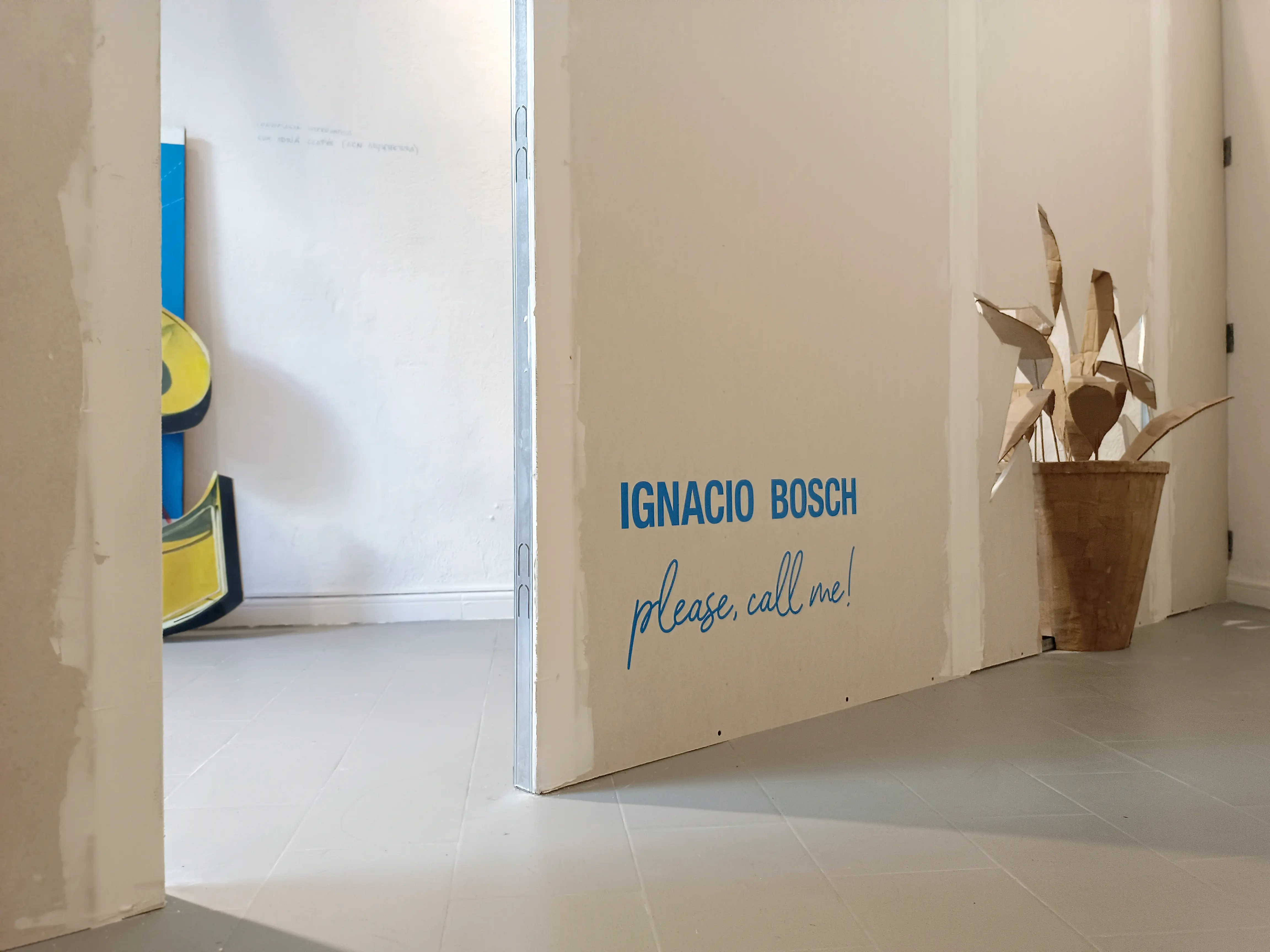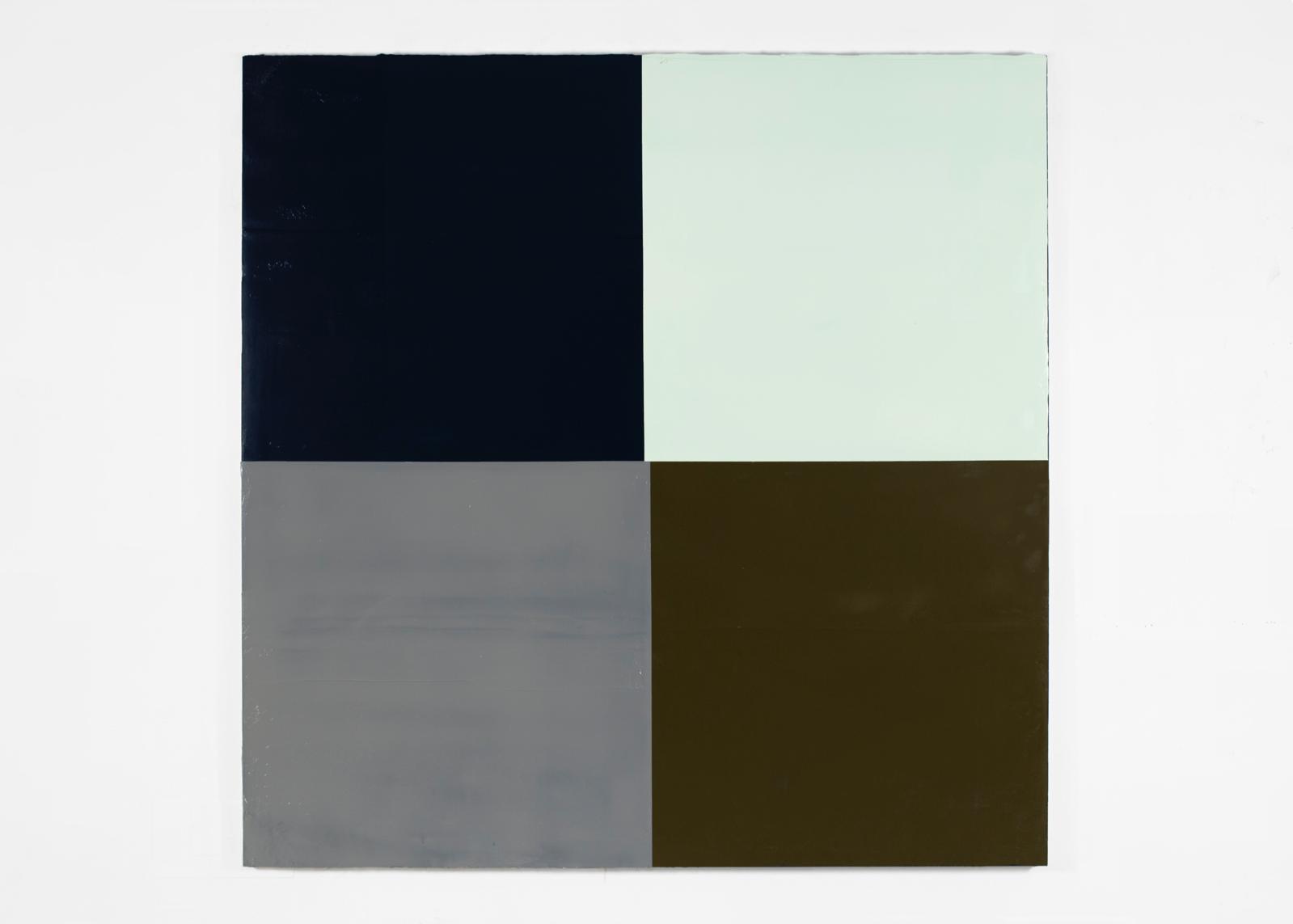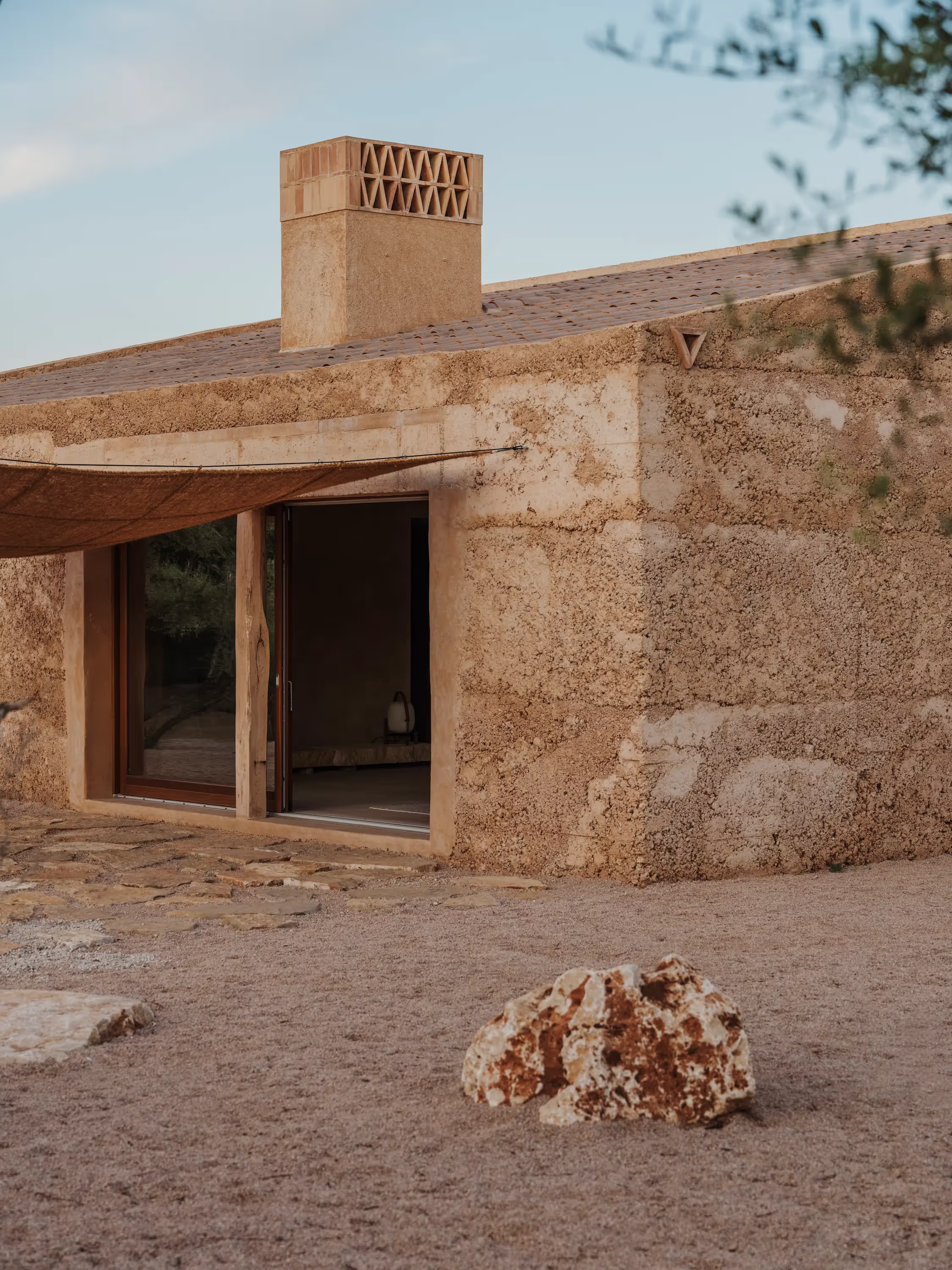Román Fabré. WAKE-UP SLAP. 2022
Upon entering this exhibition, the first thing that caught my attention was the silence. It’s not something usually present at openings… nor is a bed in the middle of the room with a couple sleeping in it. The paintings surrounding the bed compressed the space, forcing the viewer to come closer, with a constant feeling of intruding on a moment of intimacy.
Such a scene would normally take place in a private space, not in public view; yet in the artist’s studio, all activities mix together: painting, eating, sleeping, reading… Could it be that the paintings are the ones out of place? With each new visit to the studio, one gets used to seeing a painting as another inhabitant of the space. An exhibition, after all, is like a small temporary move. Perhaps it isn’t so far-fetched that the bed comes along.
Román Fabré’s pictorial practice is based on a daily investigation of scale, color, form, repetition, and accumulation—explorations that inhabit the space between figuration and abstraction, materializing in different ways: from color-field compositions to large-scale geometry. Despite being occupied, the bed functioned as a monochrome in this context. Leaving the exhibition, one encountered the chatter and conversation that would normally take place inside the room. Shortly after, the two performers awoke from their self-induced sleep and joined those conversations. Perhaps the performance ended exactly where the need to meet others began.
Ignacio Bosch. PLEASE CALL ME. 2023
At the Nit de l’Art 2023, Ignacio Bosch inaugurated the exhibition PLEASE, CALL ME!. His site-specific installations draw on context to speak with irony about their surroundings, adopting very diverse forms. In this case, the architectural intervention overflowed the exhibition room and extended onto the terrace.
One of the exhibition’s most radical gestures was the construction of a plasterboard wall that cut diagonally across the room, completely transforming the space. Despite its assertiveness, this wall did not become an impassable boundary. It could be crossed through a small opening to read, on the other side, the title of the exhibition.
Here, Bosch created a subtle space with slight interventions introducing a narrative element and reflecting on the mechanisms of inclusion and exclusion in the art world. How are those regimes of visibility and discourse collectively configured?
A cardboard plant, placed right at the limit between the two spaces, had its edges cut into the plasterboard, allowing a calculated growth. Could this be a metaphor for the growth of artists?
The silhouettes of many hands decisively pointed toward a red dot, recalling those seen at art fairs next to sold works, while a text in one corner asked about the value of art: “How do you know this work is worth millions?” Rather than seeking closed answers, the installation unfolded new questions here and there. The architectural intervention transformed the room completely, partitioning the space and offering a reflection on the language and codes of the contemporary art world.
Lucía Gorostegui. EVERYTHING IS TRUE. 2024
Lucía Gorostegui transformed the space once again in her exhibition Everything is True, inaugurated last year. In cartographers’ efforts to represent reality through maps, doses of creativity converge with a desire for precision and totality. The same happens with Gorostegui’s photographic and architectural interventions. From the literary realm, Jorge Luis Borges reflected on the paradox between representation and reality, fantasizing about a total map, precise yet useless or impossible to unfold. In his short story On Exactitude in Science he wrote:
“Less addicted to the study of cartography, the following generations saw that that vast map was useless, and not without impiety they delivered it up to the inclemencies of sun and winters. In the deserts of the West, tattered ruins of the map survive, inhabited by animals and beggars.”
This 1:1 map has much in common with the artist’s photograph, which completely covered one wall of the room. As striking as the installation itself were the photographs of its dismantling, where the optical illusion broke apart as the paper tore. Everything is True revealed how a visual décalage can completely transform the perception of space through a minimal gesture. Looking closely, the diagonal of the corner shifted slightly in its vanishing point, betraying the cartographic illusion Borges described. The room remained free to walk through, and approaching the back wall, it was impossible not to feel a slight vertigo… The exhibition was articulated with very few elements: the presence of the body in space and an intervention that did not aim to guide the path but to momentarily play with perception.
These exhibitions are just a glimpse of what TACA has been and can continue to be. Hopefully, beyond generously offering a space to so many artists on the island, it will also inspire a new generation now facing a lack of foundational context.
And while that new reality takes root—may the project continue for many more years to come.
